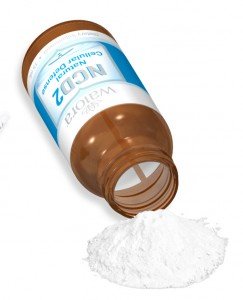Methods of Detoxification
3 min read
The body has a variety of mechanisms for dealing with toxicity, but the current total load exceeds the body’s ability to adapt. When the body fails to break down or remove these toxins, the only other way to deal with them is through sequestration. The body will try to deposit these compounds into tissue to minimize their potential damage. For example, lead may be sequestered into bone, displacing calcium and increasing the risk of osteoporosis. The overall load of these toxins is sometimes called the “body burden”.
A high body burden has been implicated in the following:
- Immunotoxicity – leading to asthma, allergies, cancers and chronic disease;
- Neurotoxicity – leading to cognition impairment, memory loss as well as sensory and motor dysfunction;
- Endocrine toxicity – leading to reproductive issues, loss of libido and metabolic impairment.
Aside from limiting exposure, everyone should be actively aiding their bodies in the elimination of these toxins. Most programs for detoxification focus on the body’s ability to excrete, either through perspiration or digestive elimination.
Saunas, which have been used to promote perspiration, can also lead to dehydration and electrolyte imbalance. “Natural” or “herbal” laxatives or diuretics are used to increase elimination through urination and fecal wasting. These include the ubiquitous colon cleanse products. By helping our bodies to remove waste quickly, it may aid in lowering the body burden over time.
The problems associated with this form of detoxification include: dehydration, dependence and dumping. Any increase in fluid elimination may lead to dehydration and loss of electrolytes. It is important to drink plenty of water and maintain hydration during any detoxification program. Additionally, many diuretics and laxatives may create a dependence for the user.
The body becomes used to the aid in wasting and may cease to function normally without it. As an example, patients abusing natural laxatives may experience severe constipation when discontinuing their use. Lastly, the increase in wasting may facilitate the rapid removal of sequestered toxins from tissues. This is sometimes known as “dumping” and can lead to the side effects of detoxification, sometimes known as a “healing crisis” or “dumping syndrome”. It’s important to detox slowly in this fashion to prevent these issues.
Chelation
A more direct method for removing toxic compounds is chelation therapy, especially for the removal of heavy metals. The term chelation (pronounced “key-layshun”) comes from the Greek word chele, which means “claw,” referring to the way the negatively charged chemicals used in this process grab onto positively charged metal molecules (ions).
The first commercially available chelating agent was a chemical called ethylene diamine tetraacetic acid (EDTA), which has a molecular structure that actually resembles a clawed hand.
Chelating agents are substances that can chemically bond with toxic minerals, metals, and chemicals within the body. The proposed goal of chelation therapy is to remove harmful substances from the body by having a chelating agent form a complex with the toxic substance and allow the body to remove that complex using its natural mechanisms of waste product removal. In essence, a chelating agent encircles a mineral or metal ion and carries it out of the body via urine and feces.
Classic chelation may not be well-tolerated in some people. It tends to be expensive and is usually supplied intravenously, which is certainly inconvenient. Additionally, chelating agents tend to be non-specific and may remove healthy metals (calcium, magnesium, etc..) as well as toxic metals. Lastly, most chelators may cause a host of unwanted side effects, including: headaches, local skin irritation, nausea or stomach upset, diarrhea, feeling like fainting, extreme fatigue, fever, cramps and pain in the joints. Most of these side effects can be linked to dehydration or electrolyte imbalance caused by the chelating agent.
The newest research centers on the use of the mineral zeolite ‘clinoptilolite’. When properly micronized and activated, the zeolite effectively attracts and traps small, highly-charged particles that fit into the pores and channels of the zeolite cage. This includes heavy metals (lead, cadmium, mercury, etc.), nitrosamines and environmental pollutants.
Understand that this is a passive process – when the zeolite is in close proximity to these compounds, they will be drawn to the zeolite and either absorbed into the cage or adsorbed onto the surface of the zeolite. Once trapped by the zeolite, these toxins are easily removed from the body.



